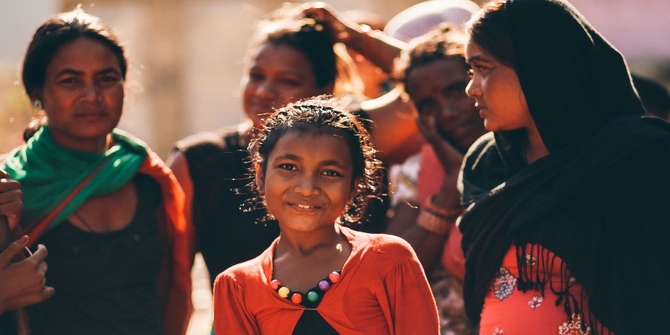A recent Madras High Court judgement made headlines for suggesting that couples who have premarital sex can be considered to be married. Jayna Kothari puts the judgement in legal context and argues that the court’s ruling strengthens the position of women in longstanding, intimate relationships.
The recent Madras High Court judgement in Aysha vs. Ozir Hassan has received unusual media coverage in India. The hype surrounding the judgement has been primarily caused by reports selecting isolated phrases from the judgement such as “if any couple indulges in sexual gratification, then that would be considered as valid marriage and they could be termed as “husband and wife” (paragraph 16 (viii) of the judgement). Such statements when read in isolation seem outrageous, and make headlines. But this argument is not the essence of the judgement, which becomes clear on reading it in its entirety.
The brief facts in the case were that Aysha had been in a relationship with the respondent Ozir and she claimed that they were married. However, she had no proof of marriage. The couple also had two children born to them. Ozir deserted Aysha and the children, following which Aysha approached the Family Court claiming maintenance for herself and her two daughters. In court, Ozir denied he was married to Aysha and also that the children were his. The Family Court reached a finding that the children were Ozir’s and granted maintenance for them but rejected Aysha’s claim for maintenance on the grounds of lack of evidence of their marriage.
Against this judgement, Aysha approached the Madras High Court and Justice Karnan reversed the Family Court’s decision and directed Ozir to pay maintenance to Aysha. He relied on hospital records of a birth report signed by Ozir as husband and his document giving consent for her to have a caesarean section to find that Ozir had openly and officially admitted Aysha to be his wife. On the basis of these documents, Justice Karnan held that the couple lived together as spouses.
This is not a new legal proposition. Section 2(f) of the Protection of Women against Domestic Violence Act 2005 (PWDVA) refers to “domestic relationships”, which include not only marriage but also relationships “in the nature of marriage”. Relying upon this legislation, the Supreme Court in 2010 for the first time in D. Veluswamy v Patchiammal explored the concept of live-in relationships and laid down conditions to determine whether a particular relationship can be considered as such in the nature of marriage or a common law marriage. The conditions are: (a) The couple must hold themselves out to the society to as being akin to spouses (b) They must be of the legal age to marry (c) They must otherwise be qualified to be married, including being unmarried, and (d) they must have voluntarily cohabited and held themselves out to the society as being spouses for a significant period of time. If these conditions are met, a relationship can be held to be in the nature of marriage, although the couple may not have legally been married.
One of the main reasons under the PWDVA for recognising long-term relationships outside of marriage was to give women in such relationships rights such as maintenance, alimony and protection from domestic violence, which are normally given only to wives.
Justice Karnan did not rely on the Veluswamy judgement, but nevertheless gave a finding on the same principles that since the parties had held themselves out to be married and lived as spouses for a significant period of time, their relationship was in the nature of marriage. But he went further and held that because both parties were single and eligible for marriage, the fact that they lived together and had children elevated their status to husband and wife, and so their relationship should be considered as a marital relationship.
From there on, the judgement takes a strange turn where Justice Karnan elevates all sexual relationships to be relationships in the nature of marriage and argues that such couples cannot separate without getting a ‘divorce’ from a court. He states that a couple in a sexual relationship should bear all consequences of a relationship of marriage, even though the legal requirements of marriage such as the religious ceremony or registration were not completed.
Overall, Justice Karnan’s view on the actual case at hand was rightly decided as he held the claim of maintenance to be valid on the ground that it was sufficiently proved that the couple lived as spouses. The emphasis on sexual relationships being akin to marriage was I believe (with all due respect), perhaps due to lack of appropriate language. One can only presume that what he really meant was that couples in longstanding, intimate sexual relationships – either with or without children – should be treated as being in relationships in the nature of marriage, and thus subject to the same rights and obligations as married couples (e.g. being obligated to pay maintenance, alimony, etc.). This well-grounded argument could have been made strongly had Justice Karnan limited himself to the facts in the case and relied upon Veluswamy.
Instead, he took the absence of both parties as an opportunity to go beyond the case and elaborate how sexual consummation in a relationship can constitute marriage. This aspect of the ruling will not be a precedent as it is only an observation and cannot override personal laws that lay down the conditions for seeking divorce, which require a prior legal marriage.
At this stage, let us use the opportunity to move beyond these aspects and analyse the impact this judgement could have on future cases. This ruling is useful to the extent that it gives recognition to the rights and obligations to persons in longstanding intimate relationships. This is significant in the Indian context because there are innumerable cases where marriages are difficult to prove because registration of marriage is not compulsory, or where there is no valid marriage. Women in such relationships are denied rights to maintenance, alimony, custody of children, and protection from violence only because they cannot prove their marital status. Given that the Supreme Court has already recognised relationships in the nature of marriage, Justice Karnan’s judgement strengthens the position that women in such relationships should have the same rights as married women. However, his elaboration that any sexual relationship should be treated as marriage is best ignored.
Jayna Kothari is Advocate, High Court of Karnataka and the Supreme Court, and founder of the Centre for Law & Policy Research, Bangalore.









The notion of common law marriages is fairly well settled. The principle was clearly stated in Dinohamy v. Balahamy (1927 PC), which was affirmed in Tulsa v. Durgatiya (2008 SC). The specific issue of whether maintenance can be granted under Sec.125 Cr.PC to a woman in a common law marriage was examined in detail, and referred to a larger bench, in Chanmuniya v. Virendra Kumar (2010 SC). Justice Katju failed to notice this in Veluswamy v. Patchiammal (2010 SC). Justice Karnan failed to consider any authority.
Judges forget, fail to research, or simply ignore, the settled law, and use the Bench as a pulpit to expound their morality; worse still in language that leaves much to be desired. Is the real issue the abysmal lack of discipline both in following precedent and in writing judgments?